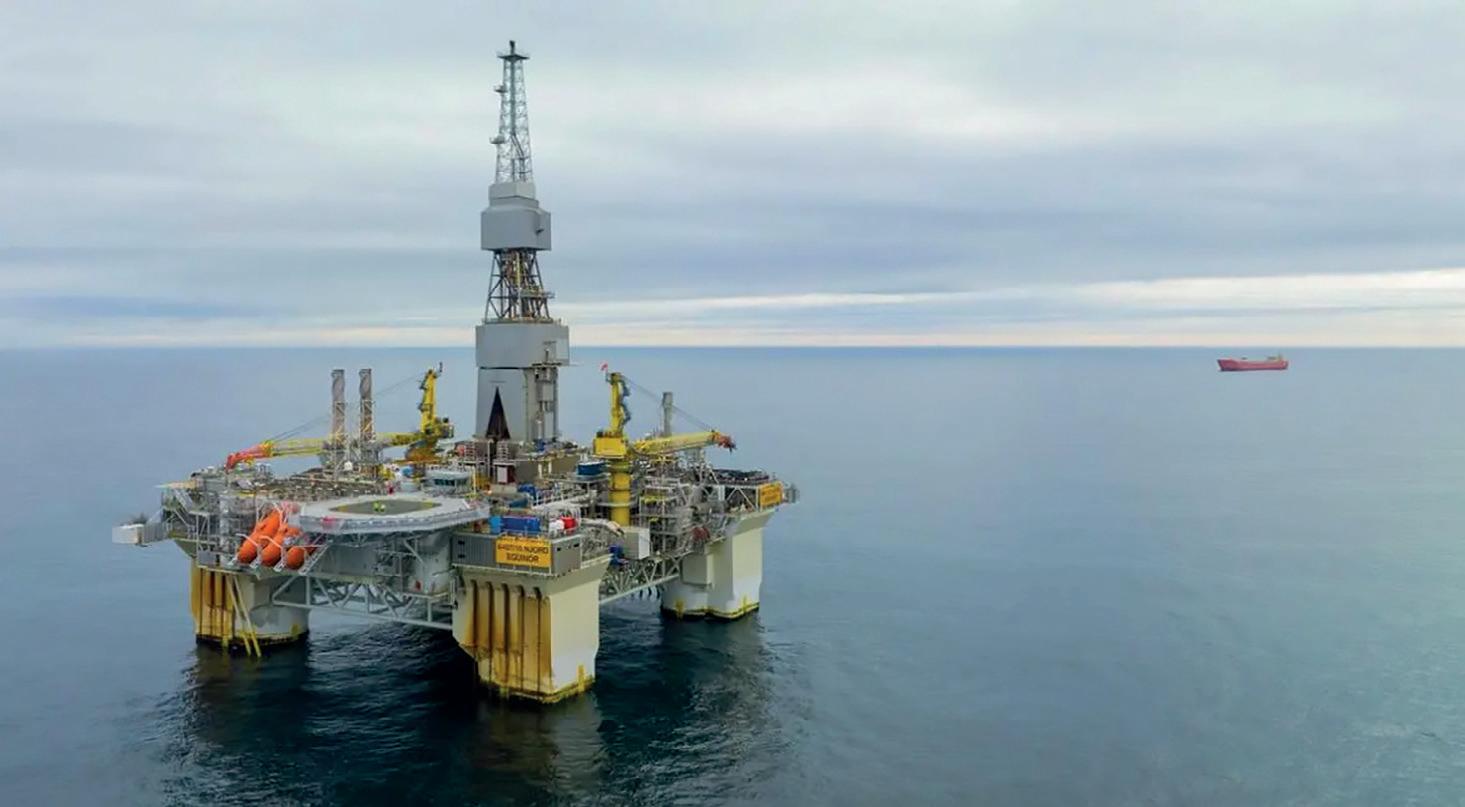
2 minute read
Europe Energy Review
By Tsvetana Paraskova
Equinor made a gas and condensate discovery near the Kristin field in the Norwegian Sea, but the primary exploration target for the wildcat well was to prove petroleum in Middle and Lower Jurassic reservoir rocks. Preliminary estimates place the size of the discovery in the Garn Formation between 0.2 and 1.1 million Sm3 of recoverable oil equivalent. The licensees will assess the discovery alongside other nearby discoveries/prospects, as regards further followup, the Norwegian Petroleum Directorate said.
In the middle of May, Equinor officially opened the Njord field, which had undergone extensive upgrades in the past years. Following the upgrades on the platform and the floating storage and offloading vessel (FSO), they are now ready for doubling the field life – and more than doubling production, the Norwegian energy giant said.
The Njord field started production in 1997 and was originally supposed to produce until 2013. Work with increased recovery means that there are still large volumes of oil and gas left, while new discoveries in the area can also be produced and exported via Njord. The field is now ready to produce and export oil and gas for another 20 years.
Neptune Energy and its partners, Vår Energi, Sval Energi, and DNO, began production from the Fenja oil and gas field in the Norwegian Sea. Fenja is expected to produce 35,000 barrels of oil equivalent per day (boepd, gross), via two oil producers, with pressure support from one water injector and one gas injector. Total reserves at the field are estimated between 50 and 75 million boe, of which 75 percent is oil and 25 percent is gas.
Oil & Gas
Norway’s Ministry of Petroleum and Energy announced the tender for the Awards in predefined areas (APA) 2023 on 10 May, encompassing the predefined areas with blocks in the Norwegian Sea, Norwegian Sea, and Barents Sea. Since the tender in 2022, the predefined areas (APA acreage) have been expanded by 78 blocks in the Barents Sea and 14 blocks in the Norwegian Sea. The deadline to apply for APA 2023 is 23 August 2023, while awards are expected during the first quarter of 2024.
Neptune Energy has also awarded a more-than-$100 million contract to Tenaris to provide equipment and services to support drilling activities on the Norwegian Continental Shelf. The contract covers the manufacture, transport, handling, and repair of a broad range of casing materials used in offshore drilling activities. Initially this will include support for one exploration well and one appraisal well in the Neptune-operated Gjøa area in the Norwegian Sea in 2023. The five-year contract has two two-year extension options.
Subsea7 was awarded a major contract by Turkish Petroleum for the second phase of the Sakarya gas field development offshore Turkey in the Black Sea. Subsea7 defines a major contract as being one where Subsea7’s share of revenue over $750 million. The contract is awarded to a consortium including Subsea7 and its partner in Subsea Integration Alliance, OneSubsea, as well as SLB and Saipem. The integrated project scope of the engineering, procurement, construction, and installation (EPCI) contract will cover the subsurface solutions including subsea production systems (SPS), subsea umbilicals and flowlines (SURF). Offshore activities are expected between Q2 2025 and Q3 2025, with optional scope between Q4 2026 and Q4 2027 subject to final investment decision by the client, Subsea7 said.











